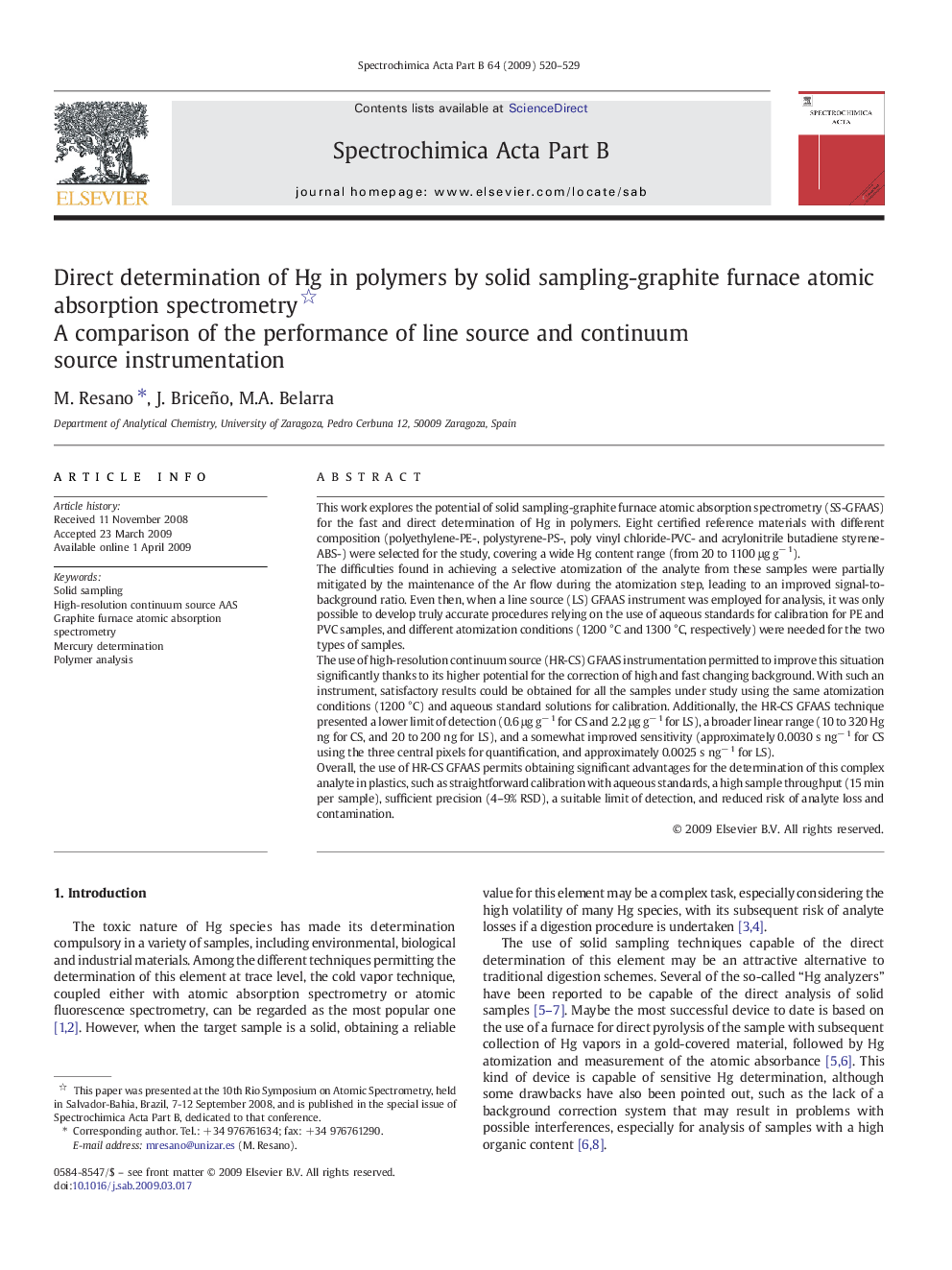| کد مقاله | کد نشریه | سال انتشار | مقاله انگلیسی | نسخه تمام متن |
|---|---|---|---|---|
| 1241006 | 969157 | 2009 | 10 صفحه PDF | دانلود رایگان |

This work explores the potential of solid sampling-graphite furnace atomic absorption spectrometry (SS-GFAAS) for the fast and direct determination of Hg in polymers. Eight certified reference materials with different composition (polyethylene-PE-, polystyrene-PS-, poly vinyl chloride-PVC- and acrylonitrile butadiene styrene-ABS-) were selected for the study, covering a wide Hg content range (from 20 to 1100 μg g− 1).The difficulties found in achieving a selective atomization of the analyte from these samples were partially mitigated by the maintenance of the Ar flow during the atomization step, leading to an improved signal-to-background ratio. Even then, when a line source (LS) GFAAS instrument was employed for analysis, it was only possible to develop truly accurate procedures relying on the use of aqueous standards for calibration for PE and PVC samples, and different atomization conditions (1200 °C and 1300 °C, respectively) were needed for the two types of samples.The use of high-resolution continuum source (HR-CS) GFAAS instrumentation permitted to improve this situation significantly thanks to its higher potential for the correction of high and fast changing background. With such an instrument, satisfactory results could be obtained for all the samples under study using the same atomization conditions (1200 °C) and aqueous standard solutions for calibration. Additionally, the HR-CS GFAAS technique presented a lower limit of detection (0.6 μg g− 1 for CS and 2.2 μg g− 1 for LS), a broader linear range (10 to 320 Hg ng for CS, and 20 to 200 ng for LS), and a somewhat improved sensitivity (approximately 0.0030 s ng− 1 for CS using the three central pixels for quantification, and approximately 0.0025 s ng− 1 for LS).Overall, the use of HR-CS GFAAS permits obtaining significant advantages for the determination of this complex analyte in plastics, such as straightforward calibration with aqueous standards, a high sample throughput (15 min per sample), sufficient precision (4–9% RSD), a suitable limit of detection, and reduced risk of analyte loss and contamination.
Journal: Spectrochimica Acta Part B: Atomic Spectroscopy - Volume 64, Issue 6, June 2009, Pages 520–529